Kairui Feng
Data-driven solar forecasting enables near-optimal economic decisions
Sep 08, 2025Abstract:Solar energy adoption is critical to achieving net-zero emissions. However, it remains difficult for many industrial and commercial actors to decide on whether they should adopt distributed solar-battery systems, which is largely due to the unavailability of fast, low-cost, and high-resolution irradiance forecasts. Here, we present SunCastNet, a lightweight data-driven forecasting system that provides 0.05$^\circ$, 10-minute resolution predictions of surface solar radiation downwards (SSRD) up to 7 days ahead. SunCastNet, coupled with reinforcement learning (RL) for battery scheduling, reduces operational regret by 76--93\% compared to robust decision making (RDM). In 25-year investment backtests, it enables up to five of ten high-emitting industrial sectors per region to cross the commercial viability threshold of 12\% Internal Rate of Return (IRR). These results show that high-resolution, long-horizon solar forecasts can directly translate into measurable economic gains, supporting near-optimal energy operations and accelerating renewable deployment.
FastAvatar: Towards Unified Fast High-Fidelity 3D Avatar Reconstruction with Large Gaussian Reconstruction Transformers
Aug 27, 2025Abstract:Despite significant progress in 3D avatar reconstruction, it still faces challenges such as high time complexity, sensitivity to data quality, and low data utilization. We propose FastAvatar, a feedforward 3D avatar framework capable of flexibly leveraging diverse daily recordings (e.g., a single image, multi-view observations, or monocular video) to reconstruct a high-quality 3D Gaussian Splatting (3DGS) model within seconds, using only a single unified model. FastAvatar's core is a Large Gaussian Reconstruction Transformer featuring three key designs: First, a variant VGGT-style transformer architecture aggregating multi-frame cues while injecting initial 3D prompt to predict an aggregatable canonical 3DGS representation; Second, multi-granular guidance encoding (camera pose, FLAME expression, head pose) mitigating animation-induced misalignment for variable-length inputs; Third, incremental Gaussian aggregation via landmark tracking and sliced fusion losses. Integrating these features, FastAvatar enables incremental reconstruction, i.e., improving quality with more observations, unlike prior work wasting input data. This yields a quality-speed-tunable paradigm for highly usable avatar modeling. Extensive experiments show that FastAvatar has higher quality and highly competitive speed compared to existing methods.
Potential Paradigm Shift in Hazard Risk Management: AI-Based Weather Forecast for Tropical Cyclone Hazards
Apr 29, 2024
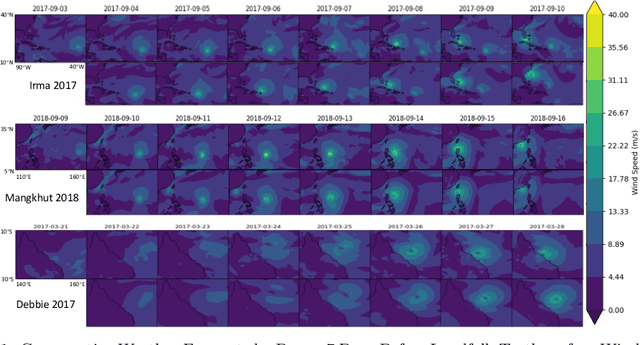
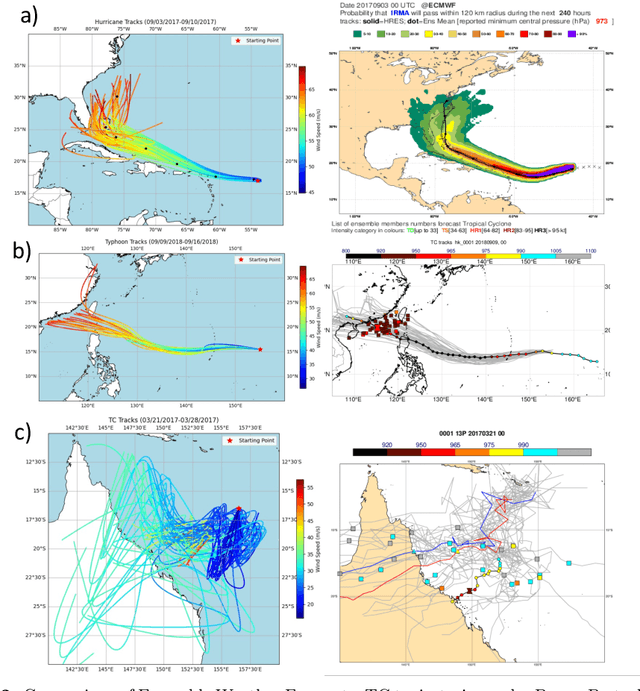
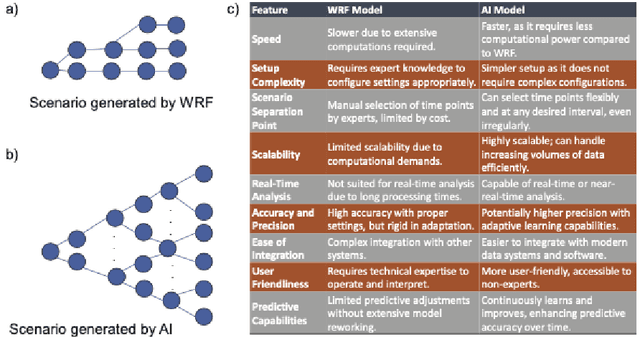
Abstract:The advents of Artificial Intelligence (AI)-driven models marks a paradigm shift in risk management strategies for meteorological hazards. This study specifically employs tropical cyclones (TCs) as a focal example. We engineer a perturbation-based method to produce ensemble forecasts using the advanced Pangu AI weather model. Unlike traditional approaches that often generate fewer than 20 scenarios from Weather Research and Forecasting (WRF) simulations for one event, our method facilitates the rapid nature of AI-driven model to create thousands of scenarios. We offer open-source access to our model and evaluate its effectiveness through retrospective case studies of significant TC events: Hurricane Irma (2017), Typhoon Mangkhut (2018), and TC Debbie (2017), affecting regions across North America, East Asia, and Australia. Our findings indicate that the AI-generated ensemble forecasts align closely with the European Centre for Medium-Range Weather Forecasts (ECMWF) ensemble predictions up to seven days prior to landfall. This approach could substantially enhance the effectiveness of weather forecast-driven risk analysis and management, providing unprecedented operational speed, user-friendliness, and global applicability.
Adversarial Diffusion Attacks on Graph-based Traffic Prediction Models
Apr 19, 2021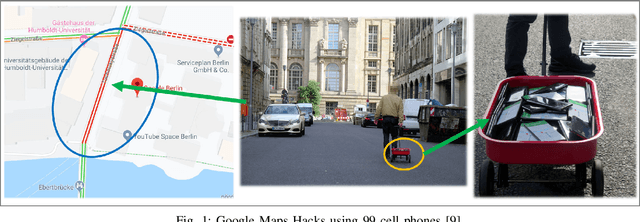

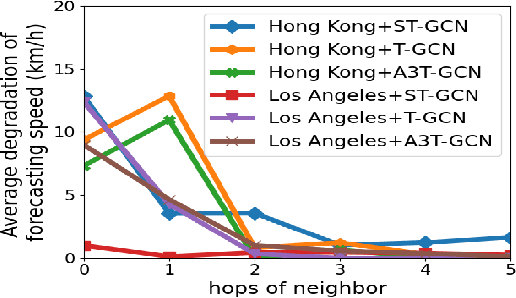
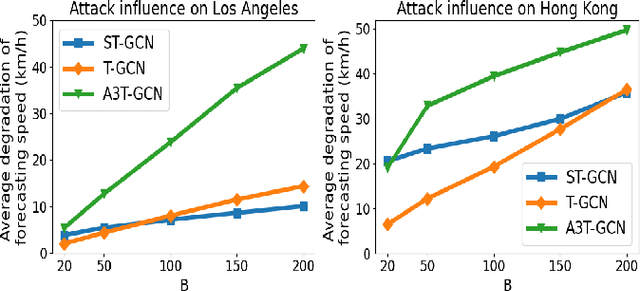
Abstract:Real-time traffic prediction models play a pivotal role in smart mobility systems and have been widely used in route guidance, emerging mobility services, and advanced traffic management systems. With the availability of massive traffic data, neural network-based deep learning methods, especially the graph convolutional networks (GCN) have demonstrated outstanding performance in mining spatio-temporal information and achieving high prediction accuracy. Recent studies reveal the vulnerability of GCN under adversarial attacks, while there is a lack of studies to understand the vulnerability issues of the GCN-based traffic prediction models. Given this, this paper proposes a new task -- diffusion attack, to study the robustness of GCN-based traffic prediction models. The diffusion attack aims to select and attack a small set of nodes to degrade the performance of the entire prediction model. To conduct the diffusion attack, we propose a novel attack algorithm, which consists of two major components: 1) approximating the gradient of the black-box prediction model with Simultaneous Perturbation Stochastic Approximation (SPSA); 2) adapting the knapsack greedy algorithm to select the attack nodes. The proposed algorithm is examined with three GCN-based traffic prediction models: St-Gcn, T-Gcn, and A3t-Gcn on two cities. The proposed algorithm demonstrates high efficiency in the adversarial attack tasks under various scenarios, and it can still generate adversarial samples under the drop regularization such as DropOut, DropNode, and DropEdge. The research outcomes could help to improve the robustness of the GCN-based traffic prediction models and better protect the smart mobility systems. Our code is available at https://github.com/LYZ98/Adversarial-Diffusion-Attacks-on-Graph-based-Traffic-Prediction-Models
RainNet: A Large-Scale Dataset for Spatial Precipitation Downscaling
Dec 18, 2020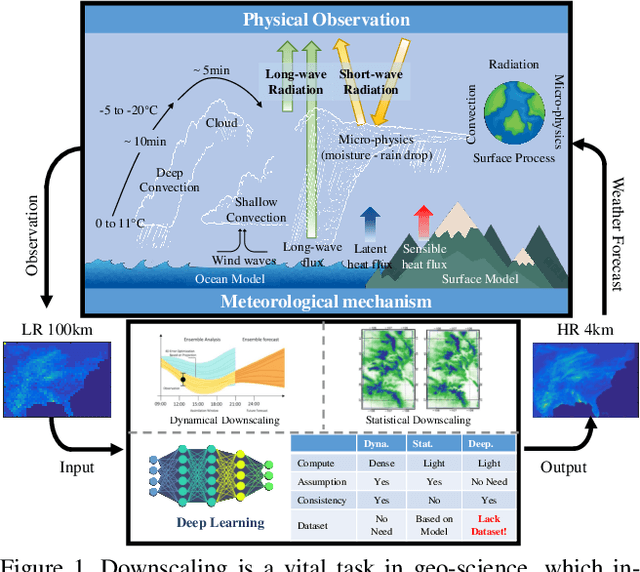
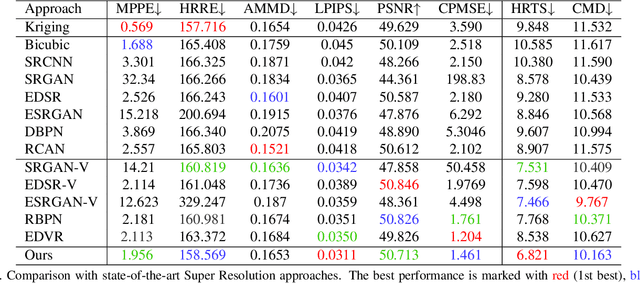
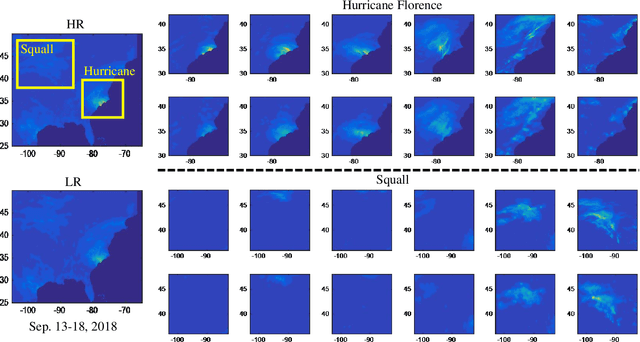

Abstract:Spatial Precipitation Downscaling is one of the most important problems in the geo-science community. However, it still remains an unaddressed issue. Deep learning is a promising potential solution for downscaling. In order to facilitate the research on precipitation downscaling for deep learning, we present the first REAL (non-simulated) Large-Scale Spatial Precipitation Downscaling Dataset, RainNet, which contains 62,424 pairs of low-resolution and high-resolution precipitation maps for 17 years. Contrary to simulated data, this real dataset covers various types of real meteorological phenomena (e.g., Hurricane, Squall, etc.), and shows the physical characters - Temporal Misalignment, Temporal Sparse and Fluid Properties - that challenge the downscaling algorithms. In order to fully explore potential downscaling solutions, we propose an implicit physical estimation framework to learn the above characteristics. Eight metrics specifically considering the physical property of the data set are raised, while fourteen models are evaluated on the proposed dataset. Finally, we analyze the effectiveness and feasibility of these models on precipitation downscaling task. The Dataset and Code will be available at https://neuralchen.github.io/RainNet/.
 Add to Chrome
Add to Chrome Add to Firefox
Add to Firefox Add to Edge
Add to Edge